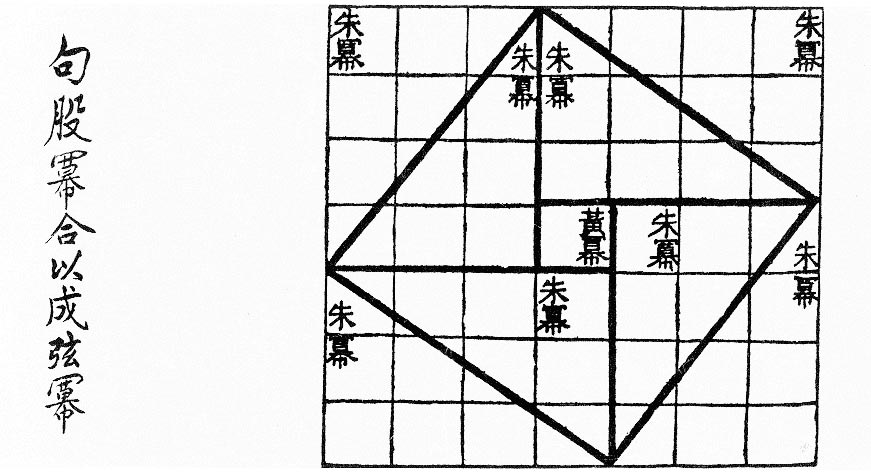|
Xiahou Yang Suanjing
''Xiahou Yang Suanjing'' (''Xiahou Yang's Mathematical Manual'') is a mathematical treatise attributed to the fifth century CE Chinese mathematician Xiahou Yang (also known as Hsiahou Yang). However, some historians are of the opinion that ''Xiahou Yang Suanjing'' was not written by Xiahou Yang. It is one of the books in The Ten Computational Canons, a collection of mathematical texts assembled by Li Chunfeng and used as the official mathematical for the imperial examinations The imperial examination (; lit. "subject recommendation") refers to a civil-service examination system in Imperial China, administered for the purpose of selecting candidates for the state bureaucracy. The concept of choosing bureaucrats by .... Though little is known about the period of the author, there is some evidence which more or less conclusively establishes the date of the work. These suggest 468 CE as the latest possible date for the work to be written and 425 CE as the earliest date. Conten ... [...More Info...] [...Related Items...] OR: [Wikipedia] [Google] [Baidu] |
Chinese Mathematics
Mathematics in China emerged independently by the 11th century BCE. The Chinese independently developed a real number system that includes significantly large and negative numbers, more than one numeral system ( base 2 and base 10), algebra, geometry, number theory and trigonometry. Since the Han Dynasty, as diophantine approximation being a prominent numerical method, the Chinese made substantial progress on polynomial evaluation. Algorithms like regula falsi and expressions like continued fractions are widely used and have been well-documented ever-since. They deliberately find the principal ''n''th root of positive numbers and the roots of equations. The major texts from the period, '' The Nine Chapters on the Mathematical Art'' and the '' Book on Numbers and Computation'' gave detailed processes for solving various mathematical problems in daily life. All procedures were computed using a counting board in both texts, and they included inverse elements as well as Eucli ... [...More Info...] [...Related Items...] OR: [Wikipedia] [Google] [Baidu] |
The Ten Computational Canons
The ''Ten Computational Canons'' was a collection of ten Chinese mathematical works, compiled by early Tang dynasty mathematician Li Chunfeng (602–670), as the official mathematical texts for imperial examinations in mathematics. The Ten Computational Canons includes: #''Zhoubi Suanjing'' (''Zhou Shadow Mathematical Classic'') #'' Jiuzhang Suanshu'' (''The Nine Chapters on the Mathematical Art'') #''Haidao Suanjing'' (''The Sea Island Mathematical Classic'') #''Sunzi Suanjing'' (''The Mathematical Classic of Sun Zi'') #'' Zhang Qiujian Suanjing'' (''The Mathematical Classic of Zhang Qiujian'') #'' Wucao Suanjing'' (''Computational Canon of the Five Administrative Sections'') #'' Xiahou Yang Suanjing'' (''The Mathematical Classic of Xiahou Yang'') #'' Wujing Suanshu'' (''Computational Prescriptions of the Five Classics'') #'' Jigu Suanjing'' (''Continuation of Ancient Mathematical Classic'') #'' Zhui Shu'' (''Method of Interpolation'') It was specified in Tang dynasty laws on exami ... [...More Info...] [...Related Items...] OR: [Wikipedia] [Google] [Baidu] |
Li Chunfeng
Li Chunfeng (; 602–670) was a Chinese mathematician, astronomer, historian, and politician who was born in today's Baoji, Shaanxi, during the Sui and Tang dynasties. He was first appointed to the Imperial Astronomy Bureau to help institute a calendar reform. He eventually ascended to deputy of the Imperial Astronomy Bureau and designed the Linde calendar. His father was an educated state official and also a Taoist. Li died in Chang'an in 670. Background and career The Sui dynasty was integral for uniting China, so it was a good time for learning. But when Li was sixteen the Sui fell, and the Tang rose. Nevertheless, the Tang did not harm the conditions for education. Indeed, it rather strengthened it. The Imperial Academy's math teaching was formalized. He was appointed into the Imperial Astronomy Bureau as an advanced court astronomer and historian, in 627. Once several years had passed, he then was promoted to deputy director of the Imperial Astronomy Bureau in 641, and even ... [...More Info...] [...Related Items...] OR: [Wikipedia] [Google] [Baidu] |
Imperial Examinations
The imperial examination (; lit. "subject recommendation") refers to a civil-service examination system in Imperial China, administered for the purpose of selecting candidates for the state bureaucracy. The concept of choosing bureaucrats by merit rather than by birth started early in Chinese history, but using written examinations as a tool of selection started in earnest during the Sui dynasty (581–618) then into the Tang dynasty of 618–907. The system became dominant during the Song dynasty (960–1279) and lasted for almost a millennium until its abolition in the late Qing dynasty reforms in 1905. Aspects of the imperial examination still exist for entry into the civil service of contemporary China, in both the People's Republic of China (PRC) and the Republic of China (ROC). The exams served to ensure a common knowledge of writing, Chinese classics, and literary style among state officials. This common culture helped to unify the empire, and the ideal of achievemen ... [...More Info...] [...Related Items...] OR: [Wikipedia] [Google] [Baidu] |
Mathematics Manuscripts
Mathematics is an area of knowledge that includes the topics of numbers, formulas and related structures, shapes and the spaces in which they are contained, and quantities and their changes. These topics are represented in modern mathematics with the major subdisciplines of number theory, algebra, geometry, and analysis, respectively. There is no general consensus among mathematicians about a common definition for their academic discipline. Most mathematical activity involves the discovery of properties of abstract objects and the use of pure reason to prove them. These objects consist of either abstractions from nature orin modern mathematicsentities that are stipulated to have certain properties, called axioms. A ''proof'' consists of a succession of applications of deductive rules to already established results. These results include previously proved theorems, axioms, andin case of abstraction from naturesome basic properties that are considered true starting points of t ... [...More Info...] [...Related Items...] OR: [Wikipedia] [Google] [Baidu] |


